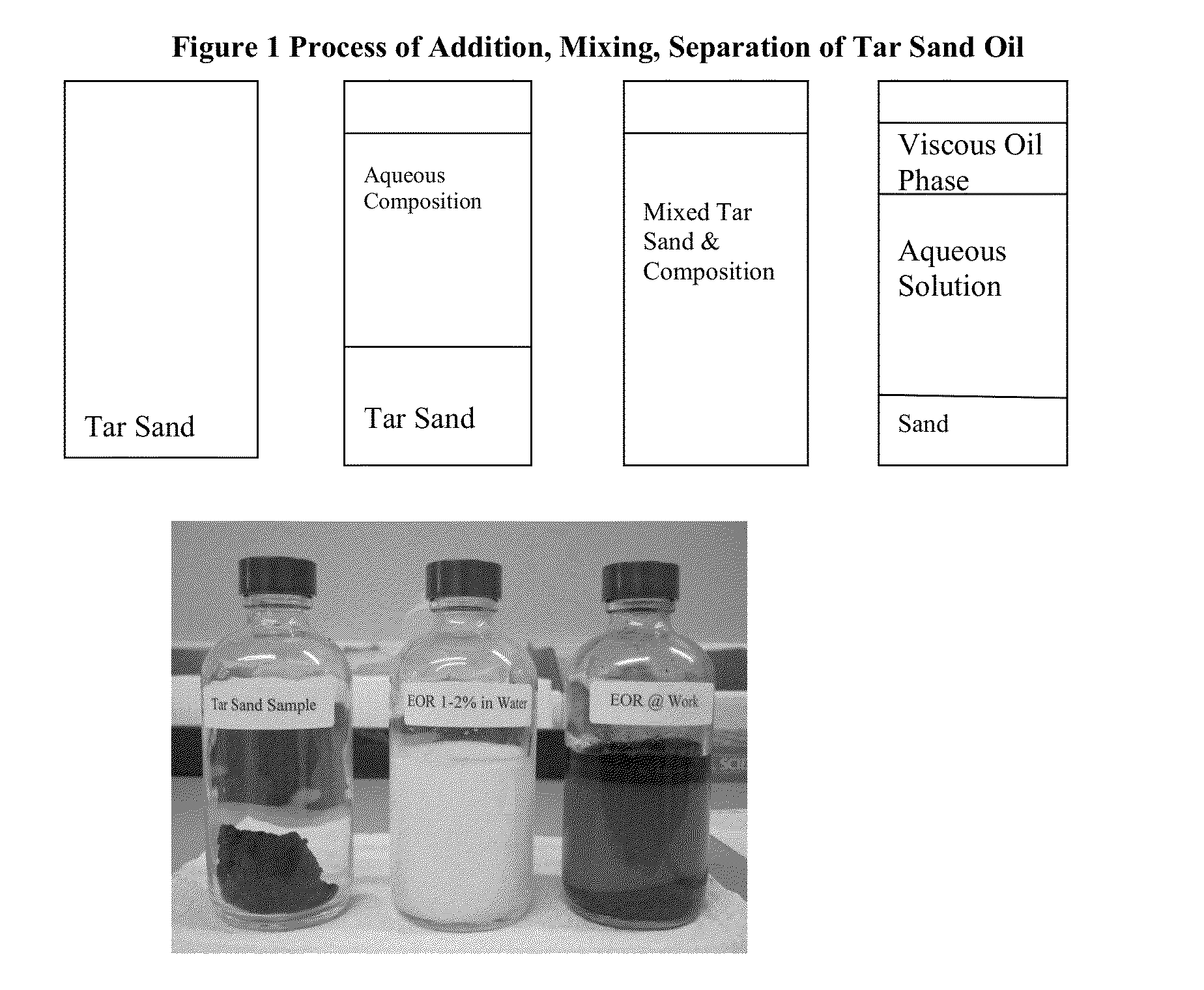Method of Oil Extraction
a technology of oil extraction and oil flow, applied in the field of oil extraction, can solve the problems of reducing the flow of oil, difficulty in recovering, and original oil reserves remaining untapped
- Summary
- Abstract
- Description
- Claims
- Application Information
AI Technical Summary
Benefits of technology
Problems solved by technology
Method used
Image
Examples
Embodiment Construction
[0044]The aforementioned composition was tested on depleted oil fields in Pennsylvania, most of which were shallow oil fields. So little oil was being recovered by traditional extraction methods that it had become uneconomical to continue using the traditional methods.
[0045]The composition was tested for oil viscosities of >30 cp with adequate mobility control. Good mobility control is essential allows for maximum utilization of the diluted mixture. The composition, which in this case was 5 gallons of mixture, mixed with 245 gallons of brine water (to make 2% solution) is reusable after recovery. After the first treatment, the produced initial emulsion was recovered and pumped back to the well to initiate another treatment.
[0046]In order to reduce the potential effect of high divalent ions, a special complex agent (in this case EDTA) was added to the mixture to ensure low adsorption of surfactants. The composition was tested in wells of temperature 200° F. with no adverse effect. Th...
PUM
 Login to View More
Login to View More Abstract
Description
Claims
Application Information
 Login to View More
Login to View More - R&D
- Intellectual Property
- Life Sciences
- Materials
- Tech Scout
- Unparalleled Data Quality
- Higher Quality Content
- 60% Fewer Hallucinations
Browse by: Latest US Patents, China's latest patents, Technical Efficacy Thesaurus, Application Domain, Technology Topic, Popular Technical Reports.
© 2025 PatSnap. All rights reserved.Legal|Privacy policy|Modern Slavery Act Transparency Statement|Sitemap|About US| Contact US: help@patsnap.com

